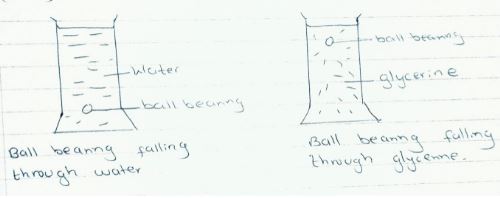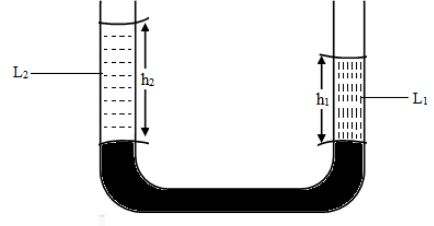PHYSICS
FORM 1
MID TERM 2
INSTRUCTIONS:
- Answer all the questions
- Define physics ( 1 mk )
- The following are branches of physics.
Explain what each one of the deals with.- Mechanics ( 1 mk )
- Atomic physics ( 1 mk )
- Geometrical optics ( 1 mk )
- Waves ( 1 mk )
- Explain how physcics is applied in
- Geography ( 2 mks )
- Home science ( 2 mks )
- State 3 laboratory rules a student should follow to avoid electrical shocks. ( 3 mks )
- State the first aid measure for each of the cases.
- A cut from glass apparatus. ( 1 mk )
- When a chemical lands in the eye ( 1 mk )
- When an acid burns a hand ( 1 mk )
- An electric shock ( 1 mk )
-
- Differentiate between basic physical quantities and derived quantities. (2 mks )
- Give two examples of derived quantities . ( 2 mks )
- Fill in the table below. ( 10 mks )
Basic physical quantity S.I. Unit Symbol of unit Electric current luminous intensity Time Amount of substance Mass
- Determine the density in kg/m3 of a solid whose mass is 1080g and whose dimensions in cm are length=3,width= 4 and height= 3 .
- Record accurately the mass indicated by the pointer in the figure below. ( 2 mks )
- What are the readings shown on the metre rule below. ( 5 marks )
P1 =
P2 =
P3 =
P4 =
P5 = -
- Define force and state its SI Units ( 2 mks )
- State 3 effects of force on a body. ( 3 mks )
- When a ball bearing is dropped in water and then in glycerine . It is observed that it takes more time to reach the bottom in glycerine.
Explain this observation. ( 3 mks ) - The figure below shows water drops on two surfaces.
a) glass surface smeared with wax b) clean glass surface
Explain the difference in the shapes of the two drops of water ( 2 mks ) - State 2 ways of reducing surface tension in liquid. ( 2 mks )
- A body weighs 120N in air and 70N when submerged in water. Calculate the upthrust acting on the body. ( 3 mks )
- Give a reason why weight of a body varies from one place to another. ( 1 mk )
-
- Define pressure and state its SI unit. ( 2 mks )
- State 2 factors that determine the pressure at a point in a liquid. ( 2 mks )
- State pascal’s principle of transmission of pressure in fluids. ( 1 mk )
- A brick 20 cm long, 10 cm wide and 2 cm thick has a mass of 5 kg. Determine the
- Maximum pressure that can be exerted by the brick on a flat surface. ( 3 mks )
- Minimum pressure that can be exerted by the brick on a flat surface. ( g = 10N/kg ) ( 2 mks )
- The figure below shows a U-tube.
- State what happens to the flow if the system above were put in a vacuum. ( 1 mk )
- The density of L1 and L2 are 1.8g/cm3 and 0.8g/cm3. If h1 = 8 cm Determine h2 . ( 3 mks )
- The density of mercury is 13,600kg/m3, Determine the pressure at a point 76 cm below the surface of mercury. ( g = 10N/kg ) ( 3 mks )
- The mass of a density bottle is 20.g when empty, 70g when full of water and 55g when full of second liquid
Calculate;- Mass of water ( 1 mk )
- Mass of liquid ( 1 mk )
- Volume of water ( g w = 1 g/cm3 ( 1 mk )
- Density of liquid in g/cm3. ( 2 mks )
MARKING SCHEME
- Physics is the study of matter and its relation to energy.
-
- Mechanics involves study of motion of bodies under the influence of forces.
- Atomic physics involves the study of the behaviour of particles constituting the nucleus and accompanying energy changes.
- Geometrical optics is the behaviour of light as it trasverses various media.
- Waves deals with propagation of energy through space.
-
- Construction of instruments used in geography and also various concepts studied in physics e.g heat transfer.
- Design and manufacture of some kitchen equipments
-
- Handle electrical apparatus with dry hands
- Never plug in foreign objects into electrical sockets.
- Ensure that all electrical switches are turned off when not in use.
-
- First stop the bleeding then dress up the woud.
- Wash off the eye with a lot of cold water immediately.
- Run cold water fast over the hand.
- Put off the main switch.
-
- Basic physical quantities can not be obtained from any other physical quantities but derived quantities Are obtained by multiplying or dividing basic physical quantities.
- Area, volume, density.
-
Basic physical quantity SI Unit Symbol of unit. Electrical current
Luminous intensity
Time
Amount of substance
MassAmphere
Candela
Second
Mole
kilogramA
Cd
s
mol
kg
- d = m = 1080 = 1080 = 30g/cm3
V (3x4x3) 36
30 x 1000 = 30,000kg/m3 - 5.50kg
- p1 = 6.90 cm
P2 = 7.50 cm
P3 = 8.00 cm
P4 = 8.50 cm or 8.60 cm
P5 = 8.80 cm -
- A pull or a push
Newton -
- Makes a stationary body start moving
- Slow down or stop a moving body
- Change direction of a moving body
- Change shape of a body.
- A pull or a push
- Glycerine is more viscous than water hence the ball bearing in water falls faster than in glycerine.
-
- In figure (a) the cohesive forces between water molecules are stronger than adhesive force between water and glass Molecules.
- In figure (b) the Adhesive forces between water and glass molecules are greater than cohesive forces between water molecules
-
- Impunities
- Increase in temperature.
- 120 - 70 = 50N
- Acceleration due to gravity changes from place to place away from the earth.
-
-
- Force acting normally per unit area
- Newton per square metre or pascal
- Density and depth of the liquid.
-
-
- F = 5 x 10 = 50N
Pmax = F = 50 = 25,000 pa
Amin 0.1 x 0.02 - Pmin = F = 50 = 2500 pa
Amax 0.2 x 0.1
- F = 5 x 10 = 50N
-
- There will be no change in flow
- h1 ρ g = h2 ρ g
8 x 1.8 x 10 = h2 x 10 x 0.8
h2 = 8 x 1.8 x 10 = 18 cm
10 x 0.8 - P = ρgh
= 13600 x 10 x 0.76
= 103,360n/m2
- There will be no change in flow
-
- 70 - 20 = 50g
- 55 - 20 = 35 g
- V = m = 50 = cm3
ρ l - ρ liquid = m = 35 = 0.7 g/cm3
v 50
Join our whatsapp group for latest updates
Tap Here to Download for 50/-
Get on WhatsApp for 50/-
Download Physics Questions and Answers - Form 1 Mid Term 2 Exams 2021.
Tap Here to Download for 50/-
Get on WhatsApp for 50/-
Why download?
- ✔ To read offline at any time.
- ✔ To Print at your convenience
- ✔ Share Easily with Friends / Students






